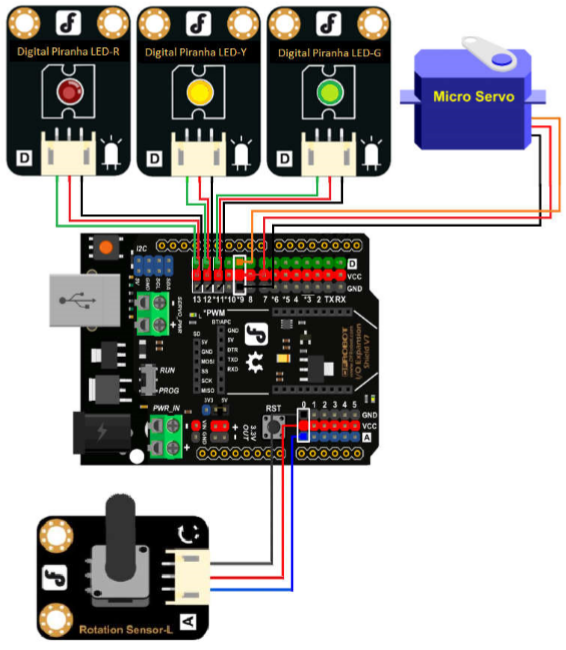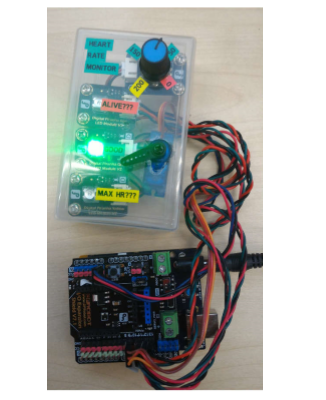PROJECTS Arduino
Make A Pseudo Heart Rate Monitor Based On Arduino/Genuino Starter Kit
DFRobot
Oct 11 2016 648
Introduction
This simple project gets a heart rate equivalent from a pot meter and shows the range one of 3 LED which is also shown by pointer controlled by a servo motor and on mobile phone Apps.
This project combines two basic Arduino example projects that use Intel Curie BLE capability and Servo motor. Its use DFRobot Gravity: Starter Kit for Genuino / Arduino 101 that simplify connecting the Pot meter, the 3 LEDs and the Servo Motor that fits into a re-cycle name card box for the user interface.
HARDWARE AND WIRING
The hardware used are:
1. Arduino/Genuino 101 (DFR0436) x1
2. Gravity: IO Expansion Shield for Arduino V7.1 (DFR0265) x1
3. USB Cable A-B for Arduino (FIT0056) x 1 (for software download)
4. 9g Metal Gear Micro Servo (1.8Kg ) (SER0039) x 1 (cable attached)
5. Gravity: Analog Rotation Sensor V1 (DFR0054) x1
6. Gravity: Digital Piranha LED Module-Red (DFR0031-R) x 1
7. Gravity: Digital Piranha LED Module - Green (DFR0031-G) x 1
8. Gravity: Digital piranha LED module-Yellow (DFR0031-Y) x 1
9. 6xAA Battery Holder with DC2.1 Power Jack (FIT0141) x 1
10. Gravity Digital Sensor Cable for Arduino x 3
11. Gravity Analog Sensor Cable for Arduino x 1
Note: these components are all included on Gravity: Starter Kit for Genuino / Arduino 101 with Tutorials.
Wiring is easy with the Gravity: IO Expansion Shield as they are colour coded for digital and analog cable. Use the green digital cable for the LEDs and Micro Servo. Use the blue for the Analog Rotation sensor as shown diagram below. The power supply for the system can be powered from Genuino 101 DC power jack.

SOFTWARE
The software are merged from two Arduino projects and modified accordingly.
Two libraries are used namely CurieBLE and Servo. Initialization and setup is the first part for :
1. BLE
2. Analog Port A0 for Rotary Sensor
3. Digital Output port (11, 12 and 13) for 3 LEDs
4. Servo - Use Port D9 as PWM outout
The main loop simply
1. Check and update BLE connection and data
2. Read the Rotary sensor,
3. Position the Servo
4. Switch on correct one of 3 LEDs.
The CurieBLE module allows simple connection to Android Phone running on simple Apps like “nRF Toolsbox” available from Goggle “PlayStore” that allow the Heart Rate be shown thru Blue Tooth.
Below screen shot is example of the nRF toolbox on “HeartRate”

MECHANICAL
All the user interface can fit into re-cycle Name card holder Box as shown below.









 Home
Home
 Category
Category
 Shopping Cart
Shopping Cart
 Me
Me